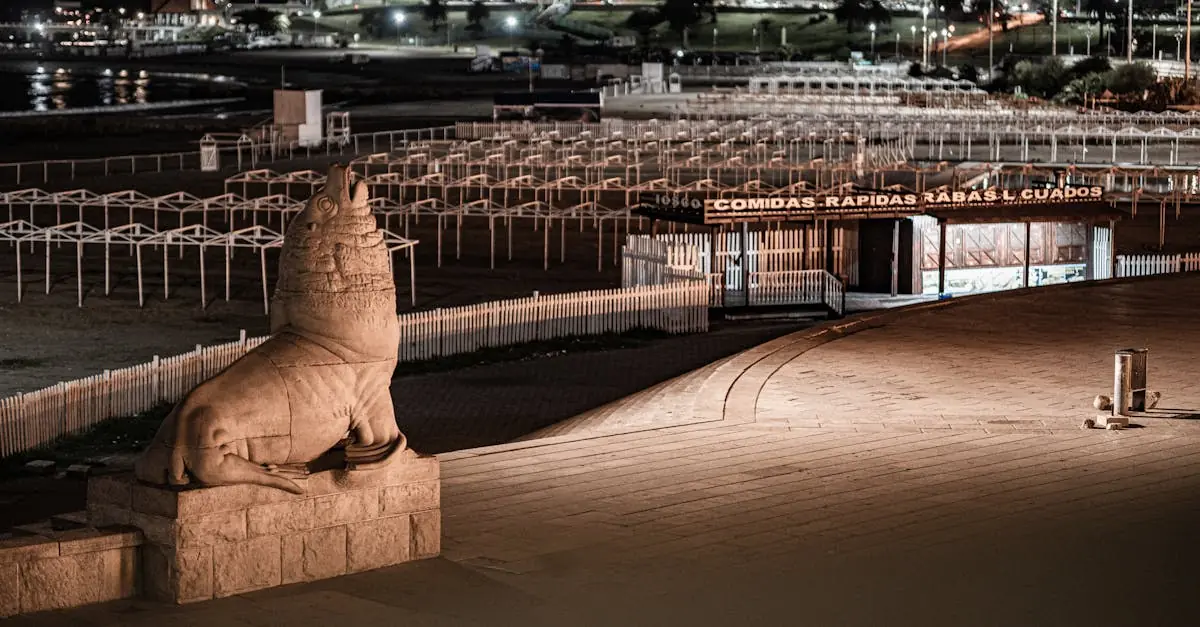Imagine stepping into a kitchen that feels like a warm hug from your favorite sweater. That’s the magic of a transitional kitchen. It effortlessly blends the charm of traditional design with the sleekness of modern aesthetics, creating a space where culinary creativity flourishes and family gatherings thrive.
Table of Contents
ToggleWhat is a Transitional Kitchen?
A transitional kitchen blends traditional and modern design elements seamlessly. This style incorporates classic cabinetry with contemporary fixtures and finishes. Designers prioritize balance, using neutral colors alongside bold accents to create visual interest.
Materials play a critical role in this design. Wood, metal, and stone combine to enhance functionality while maintaining an inviting atmosphere. Customized cabinetry often features clean lines, offering both style and ample storage.
Countertops in transitional kitchens typically include quartz or granite, providing durability and elegance. Backsplashes frequently showcase subway tiles or glass, adding a pop of sophistication. Lighting fixtures, such as pendant lights, serve as focal points while providing adequate illumination.
This kitchen design supports versatility, catering to various tastes and preferences. Homeowners can personalize their space without sacrificing cohesiveness. Features like open shelving blend practicality with aesthetic appeal, promoting an airy feel.
Furniture selection also contributes to the transitional theme. Bar stools or breakfast nooks often feature upholstered seats for comfort and style. Accessories in these kitchens often combine vintage and modern pieces, reinforcing the eclectic spirit.
A transitional kitchen promotes family engagement and culinary exploration. By combining elements from different eras, this design fosters creativity and expression. The result is a warm and inviting space where functionality meets aesthetic pleasure.
Key Features of a Transitional Kitchen

A transitional kitchen embodies a perfect mix of traditional and modern design elements. This style provides homeowners with the flexibility to create a unique space that reflects their tastes and lifestyle.
Blending Styles
Transitional kitchens seamlessly merge traditional and contemporary influences. Classic cabinetry might showcase decorative moldings, while sleek countertops offer a modern contrast. Grouping vintage and current appliances ensures functionality without sacrificing design. Mixing styles enhances visual interest and aids personalization in the kitchen. Incorporating elements like open shelving can further highlight this stylistic blend, allowing for creative displays of both functional kitchenware and decorative accessories.
Color Palettes
Neutral palettes create a calming foundation in transitional kitchens. Soft whites, grays, and beige shades serve as a backdrop for more vibrant accent colors. These accents may appear in decorative items or as bold finishes on select appliances. Stylish combinations like navy blue with crisp white or earthy greens paired with natural wood add depth. Using color strategically elevates the overall aesthetic, promoting an inviting and cohesive kitchen atmosphere. The right palette balances warmth and sophistication while accommodating various tastes.
Functional Layout
A functional layout prioritizes efficiency and flow in transitional kitchens. An open floor plan encourages interaction during cooking and entertaining. Zones for different activities, like food prep and socializing, aid in organization and movement. Incorporating islands enhances workspace while offering additional seating. Positioning appliances for easy access also boosts convenience without clutter. Well-thought-out layouts foster an inviting environment that inspires culinary exploration. The design should always reflect the needs of the household, ensuring that the kitchen serves as a practical and enjoyable gathering space.
Benefits of a Transitional Kitchen
Transitional kitchens provide numerous advantages that resonate with homeowners seeking a blend of comfort and style.
Timeless Design
Timeless design defines transitional kitchens, as they harmoniously mix classic and modern elements. The use of simple yet elegant cabinetry stands out while not sacrificing functionality. Neutral colors serve as the foundation, promoting a calming atmosphere that’s easy to refresh with vibrant accents. Design choices remain relevant through trends, ensuring classic appeal that lasts. Durable materials, such as quartz and granite for countertops, enhance longevity while maintaining aesthetic beauty. This combination creates an inviting and stylish space that adapts over time.
Versatility
Versatility characterizes transitional kitchens, allowing personalization that reflects individual tastes and lifestyles. Homeowners enjoy limitless options for integrating both traditional charm and contemporary flair. Spaces accommodate various activities, from family gatherings to quiet cooking sessions, thanks to flexible layouts. A mix of vintage and modern appliances enhances functionality without compromising visual appeal. By blending different styles, each kitchen can be unique, supporting a diverse range of designs and preferences. This adaptability makes transitional kitchens an attractive choice for many.
Popular Elements in Transitional Kitchens
Transitional kitchens blend traditional and modern design seamlessly, creating an elegant yet functional space. Key elements contribute to the characteristic style and inviting feel of these kitchens.
Cabinet Styles
Cabinet styles play a crucial role in transitional kitchen design. Shaker cabinets are popular for their clean lines and classic appeal. Decorative moldings add a touch of sophistication while maintaining simplicity. Glass-front cabinet doors enhance visual interest and allow display of fine dishware. Colors like soft whites or muted grays provide a calming ambiance, encouraging a cozy atmosphere. Additionally, mixed materials such as wood and metal create depth and texture.
Countertops and Backsplashes
Countertops and backsplashes significantly influence the overall aesthetic in transitional kitchens. Durable materials like quartz and granite offer a blend of functionality and elegance. Bright white or soft beige shades keep the visual flow light and inviting. Backsplashes often feature classic subway tiles, providing a timeless appeal. Some homeowners choose glass tiles for added sophistication; their reflective surfaces can elevate the kitchen’s design. The combination of these surfaces not only enhances beauty but also ensures practicality in daily use.
A transitional kitchen stands out as a perfect blend of tradition and modernity. Its inviting atmosphere not only enhances culinary creativity but also fosters family interactions. By combining classic and contemporary elements homeowners can create a personalized space that reflects their unique style.
The versatility of transitional kitchens ensures they remain functional and aesthetically pleasing. With a focus on durable materials and thoughtful layouts these kitchens cater to both lively gatherings and quiet moments. Ultimately a transitional kitchen provides a harmonious environment where comfort and elegance coexist seamlessly.







